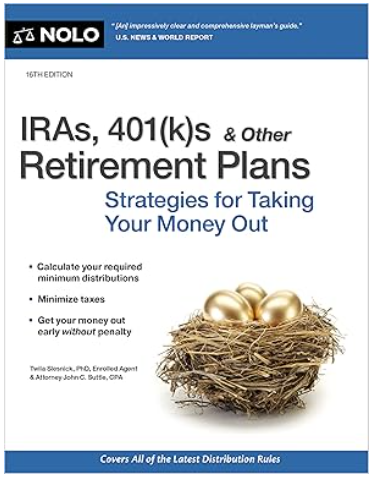3. WITHDRAWALS & DISTRIBUTIONS
"Being rich is having money; being wealthy is having time." – Margaret Bonnano
CONGRATULATIONS, YOU DID IT!
Once you’ve invested enough money, it’s time to kick back and enjoy the fruits of your labor – and I’m not just talking about buying a fancier brand of coffee. You’ve been diligently funneling money into your 401(k), Roth IRA, and taxable brokerage accounts like a squirrel hoarding nuts for winter. Now, with your financial garden in full bloom, it’s time to enjoy the harvest. Imagine sitting on a beach, sipping a piña colada, knowing that your investments are still working hard even when you’re not. It’s like having a team of little financial elves hustling away to keep your wealth growing while you bask in the sun.
Of course, enjoying the fruits of your labor isn’t all about exotic vacations and luxury purchases. Sometimes, it’s the simple pleasures that truly make it worth it. Like upgrading from generic brand cereal to the one with the cartoon mascot you loved as a kid. Or finally buying that ridiculously overpriced avocado toast without a second thought. You’ve put in the work, stayed disciplined, and now it’s time to let loose a little. Maybe that means treating yourself to a spontaneous weekend getaway, or perhaps just enjoying the peace of mind that comes with knowing you’ve got a financial safety net thicker than a wool blanket in a Scandinavian winter. Either way, you’ve earned it. Cheers to you and your wisely invested dollars!
Or, you may find yourself considering the possibility of early retirement or even pursuing a lifestyle known as “Barista FIRE.” This concept, part of the Financial Independence, Retire Early movement, allows you to retire from your primary, often stressful career while taking on a lower-stress, part-time job – like being a barista – to cover any remaining expenses. With your investments generating a steady stream of income, you gain the freedom to step back from the grind, explore new passions, and enjoy a more relaxed pace of life. Whether it’s retiring fully or adopting a Barista FIRE approach, the key is that your financial independence affords you the flexibility to choose how you spend your time, emphasizing fulfillment and quality of life over relentless work – thus living your “Best Buhay“(best life).

Withdrawal Strategy
Withdrawing just under the annual return gain of your investments is a prudent strategy that can help ensure the longevity of your retirement portfolio. This approach means taking out only a portion of your investment earnings each year, rather than dipping into the principal. By doing so, you preserve the core of your portfolio, allowing it to continue generating returns and growing over time. This method aligns well with the principles of sustainable withdrawal rates, such as the 4% rule highlighted by the Trinity Study (see below), but it goes a step further by focusing on maintaining and even increasing your investment capital.
One of the key benefits of this strategy is that it mitigates the risk of depleting your savings too quickly, especially during periods of market volatility. By withdrawing less than what your investments earn annually, you create a buffer that can absorb the impact of market downturns. For example, if your portfolio has an average annual return of 7%, withdrawing only 3-4% allows the remaining gains to be reinvested, thereby bolstering the overall value of your investments. This reinvestment can help offset any potential losses and take advantage of compound growth, further securing your financial future.
Additionally, this conservative withdrawal approach provides a measure of flexibility and adaptability. In years when the market performs exceptionally well, you might have the option to withdraw a slightly higher amount or reinvest the excess gains to further strengthen your portfolio. Conversely, in years of poor market performance, you can adjust your withdrawals accordingly to ensure you’re not compromising your long-term financial stability. This dynamic strategy not only enhances the sustainability of your retirement savings but also offers peace of mind, knowing that you’re taking a balanced and thoughtful approach to managing your investments and withdrawals.
Understanding the Trinity Study is essential for anyone planning for retirement or seeking financial independence because it provides a scientifically-backed framework for determining a safe withdrawal rate from your investment portfolio. The study’s insights offer a reliable guideline for how much you can withdraw annually without depleting your savings prematurely, ensuring that you can maintain your desired lifestyle throughout retirement. By familiarizing yourself with the Trinity Study, you gain a crucial tool for making informed financial decisions, mitigating the risk of outliving your resources, and achieving long-term financial security.
The Trinity Study, officially titled “Retirement Spending: Choosing a Sustainable Withdrawal Rate,” is a seminal piece of research in the world of personal finance and retirement planning. Conducted by three professors from Trinity University in 1998, this study sought to determine the safest withdrawal rate from retirement savings that would sustain a retiree’s lifestyle over a 30-year period. The primary question they aimed to answer was: how much can one withdraw annually from a retirement portfolio without running out of money?
To tackle this question, the Trinity Study analyzed historical data on stock and bond returns from 1925 to 1995. The researchers simulated different withdrawal rates, ranging from 3% to 12% of the initial portfolio value, adjusted annually for inflation. They tested these rates across various asset allocations, combining stocks and bonds in different proportions. The results showed that a 4% withdrawal rate, with a portfolio comprised of 50% stocks and 50% bonds, had an extremely high success rate, meaning it would likely last through the entire 30-year period without depleting the funds. This finding has since become known as the “4% rule,” a guiding principle for many retirees and early retirees seeking financial independence.
The implications of the Trinity Study are profound. It provides a clear and straightforward guideline for planning retirement savings and withdrawals, giving individuals a benchmark for how much they need to save and how they can sustainably withdraw from their nest egg. For instance, if you plan to retire with a portfolio of $1 million, the 4% rule suggests you can withdraw $40,000 annually, adjusted for inflation, with a high probability that your funds will last 30 years. This rule of thumb has empowered countless individuals to pursue early retirement and financial independence, offering a sense of security and predictability in an otherwise uncertain financial future.
However, it’s important to recognize that the Trinity Study is based on historical data and specific market conditions that may not predict future performance. Critics argue that future market returns might be lower than historical averages, and longevity risk – the possibility of living longer than 30 years in retirement – is also a concern. Despite these limitations, the Trinity Study remains a cornerstone in the field of retirement planning, providing a foundational framework for making informed financial decisions.
"By demystifying safe withdrawal rates, the Trinity Study has revolutionized how we approach retirement planning." – Anonymous
Cash Cushion
In the pursuit of early retirement, many savvy individuals have adopted the strategy of saving an additional two years’ worth of expenses to supplement their withdrawal rate during market downturns. This approach, often referred to as a “cash cushion” or “cash buffer,” acts as a safety net, providing financial flexibility when the market takes a dip. By setting aside extra funds in a highly liquid form, such as a savings account or money market fund, early retirees can avoid selling investments at a loss to cover their living expenses. This buffer ensures that their primary investment portfolio remains intact and continues to grow, adhering to the 4% withdrawal rule derived from the Trinity Study.
The logic behind this strategy is simple yet effective. During periods of market volatility, being forced to withdraw from a declining portfolio can significantly erode its value, jeopardizing long-term financial security. By having two years’ worth of expenses readily available, early retirees can ride out market downturns without touching their investments, giving their portfolio time to recover. This method not only preserves the integrity of their retirement savings but also provides peace of mind. Knowing that they have a financial cushion in place allows retirees to navigate economic uncertainty with confidence, ensuring their early retirement dreams remain on track even during challenging times.
IRAs, 401(k)s & Other Retirement Plans: Strategies for Taking Your Money Out Paperback – July 4, 2023
Save your nest egg from the IRS
About to retire? Over 73 and facing mandatory withdrawal rules? Just inherited money from a retirement plan?
Whether you have an IRA, Roth IRA, 401(k), Keogh or other retirement plan, this book will help you make sense of the rules for taking your money out. Even more important, it will show you how to avoid the stiff taxes and penalties that lurk in the fine print. It covers:
- tax strategies before and after retirement
- required distributions and how much you need to take
- penalties for taking money out early and how to avoid them
- how to divide a plan at divorce
- what happens to your retirement plan after your death, and
different rules for taking money out of an inherited plan.
